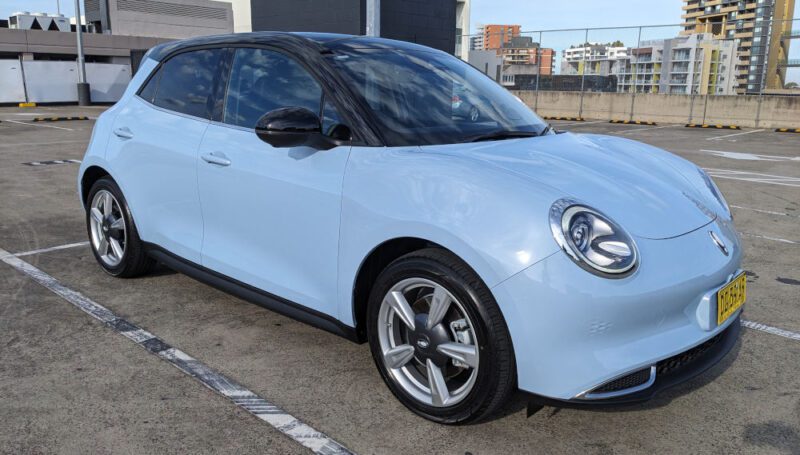The EV price wars are heating up in Australia, with recent discounts on the Nissan Leaf and Peugeot e-2008 taking the total to six models starting below $40,000. According to some reports, the discounted Peugeot e-2008 has already sold out, showing that EV buyers are keen if the price is right.
Since the latest price cut by GWM in April, the Ora Standard Range remains the most affordable new electric vehicle in Australia with a starting price of $35,990 driveaway. The Ora Standard Range is fitted with a 48 kWh LFP battery which gives drivers up to 310 km of WLTP range.
Stepping up to the Extended Range variant tested here costs $40,990 driveaway, fitted with a 63 kWh NMC battery for 420 km WLTP range. Apart from the battery pack, specifications are identical between the standard and extended range variants, meaning the Ora Standard Range is good value for money.
Similarities between Ora variants continues into the $43,990 Ora Ultra Extended Range and $46,990 Ora GT Extended range as well. Both of these utilise the same 63 kWh battery pack with minimal upgrades such as hands-free electric tailgate, panoramic sunroof, front seat heating, memory and massage functions.
Ora is the EV division for China’s Great Wall Motors (GWM) and is named after pioneering Swiss mathematician Leonhard Euler. Ora vehicles are built on GWM’s pure electric ME platform and GWM currently source their batteries from CATL but will soon be switching to S-VOLT, a partner of GWM.
The GWM Ora is now known as the Ora 03 in some overseas markets like the UK, so presumably GWM will have to rename the Ora here before bringing a second EV to market. Otherwise the Ora name will become confusing, much like Hyundai’s original Ioniq and Audi’s first e-tron models.
Exterior design and storage
First impressions walking up to the GWM Ora are dominated by its quirky and interesting exterior design. The Ora attracted plenty of attention, more people asked me what type of car it is than many others I have tested recently. It is easy to see why the Ora was originally called the Funky Cat in some overseas markets.
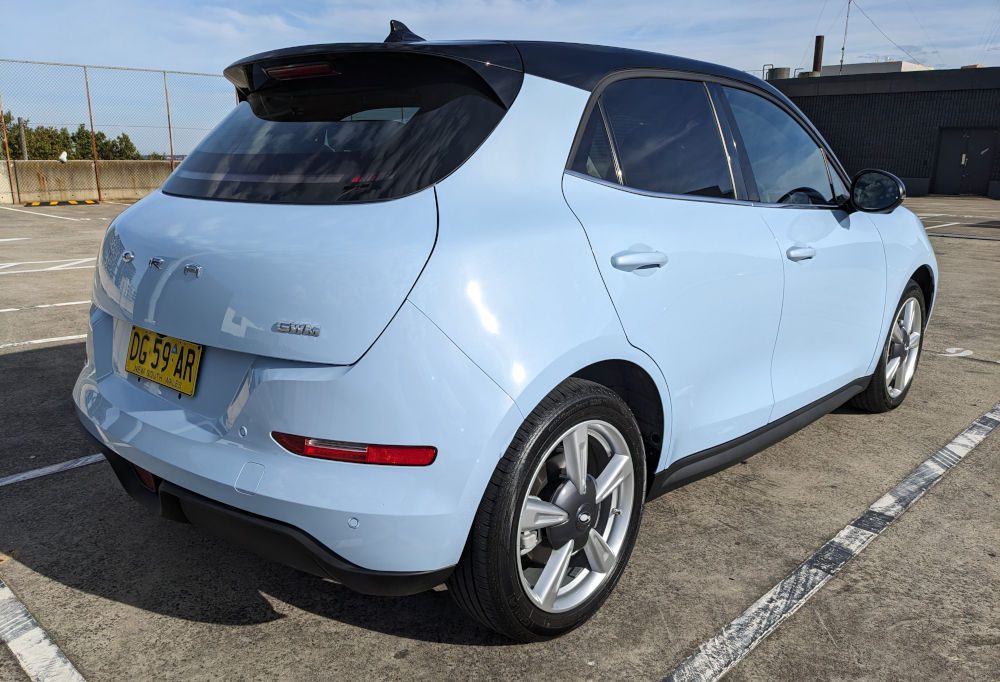
GWM Ora variants are hard to pick apart as 18 inch wheels are standard across the range and base variants feature a black painted roof which looks similar to the panoramic sunroof fitted to Ultra and GT variants. Only the top-spec GT stands out with red accents and a different wheel design, both of which look good in person.
Boot space in the Ora is relatively small, measuring only 228 L with the rear seats up. This is much smaller than the Ora’s closest competitors in the MG4 (350 or 363 L) and BYD Dolphin (345 L). At least the underfloor area has enough space to hold charging cables and a tyre repair kit, no spare tyre though.
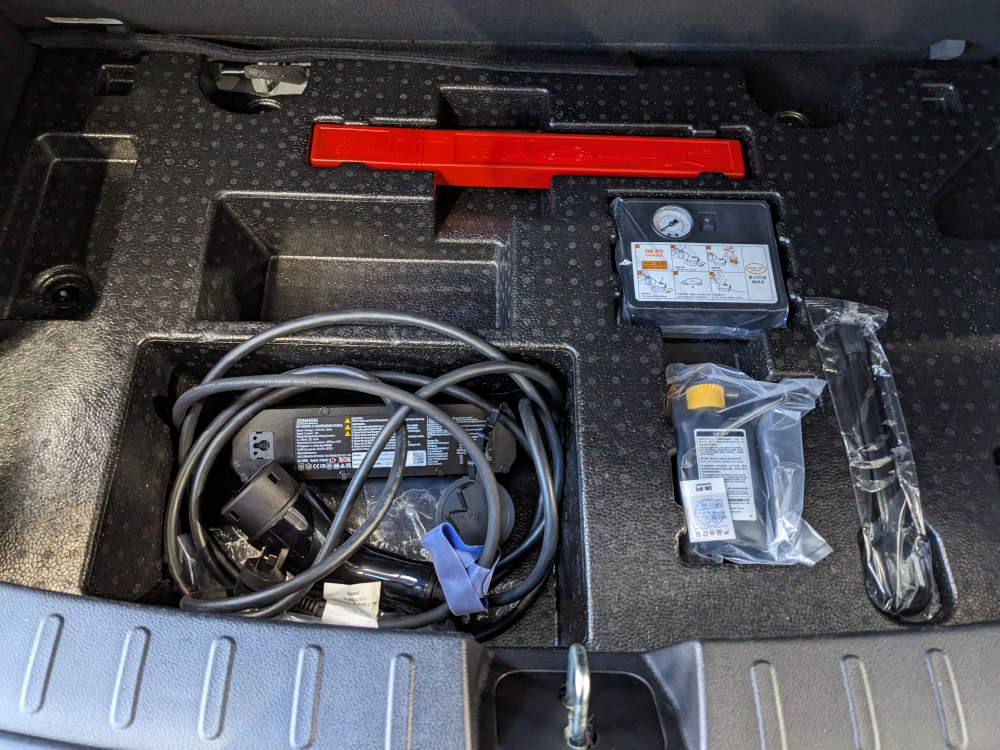
There is no frunk in the Ora either, similar to the MG4 and Dolphin. Folding the rear seats down opens up another 630 L of storage space, bringing the total to 858 L if you are only carrying two people. I found the space quite usable with the hatchback opening and there was plenty of room left over when I loaded up the boot with stuff for Vinnies.

Interior and infotainment
Opening up the doors reveals the funky design theme continuing inside the GWM Ora, with faux leatherette seats stitched in blue, matching the door liners, centre console and dash. The dash is covered with a soft Alcantara like material and feels premium, although hard plastics are the most common material throughout the centre console and door pockets.
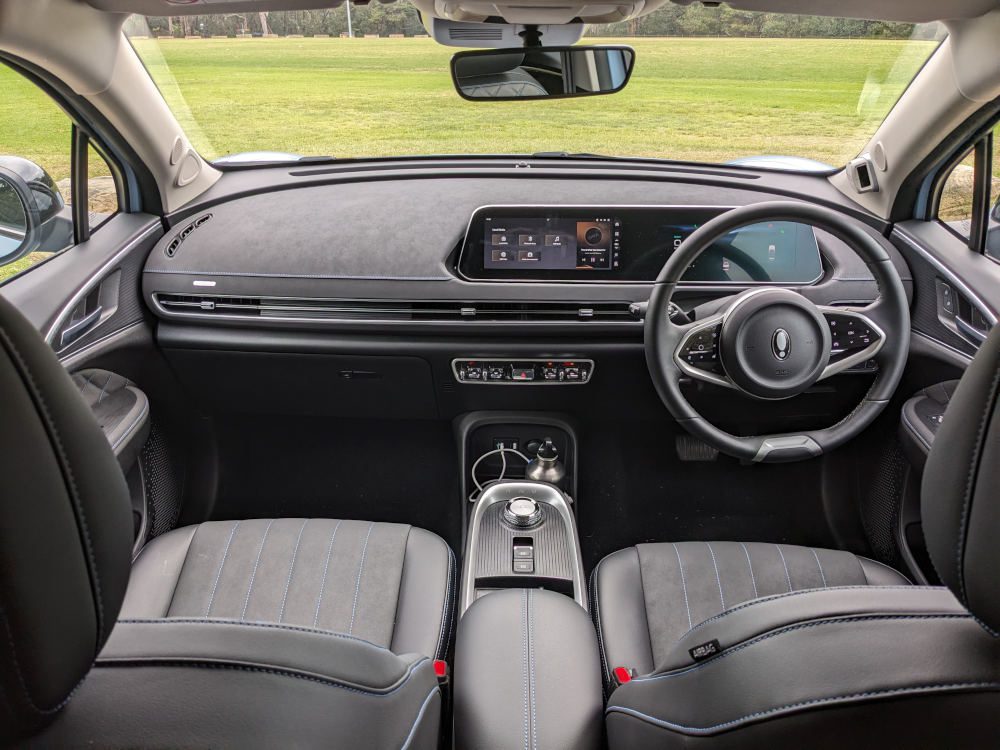
Interior storage space up front is limited to one decent sized storage compartment under the centre armrest and two cup holders, along with two wireless phone charging pads and a single USB-A port. Door bins are smaller than usual, unable to hold my 600 mL insulated bottle that fits comfortably in other cars.
I found the Ora seats were comfortable and soft enough for most trips although felt a bit flat and unsupportive on longer drives. Space and comfort in the rear is good for a car of this size too, owing to the dedicated EV platform. I’m not sure why there is a slight hump in the middle of the rear floor when there is no need for a transmission tunnel.
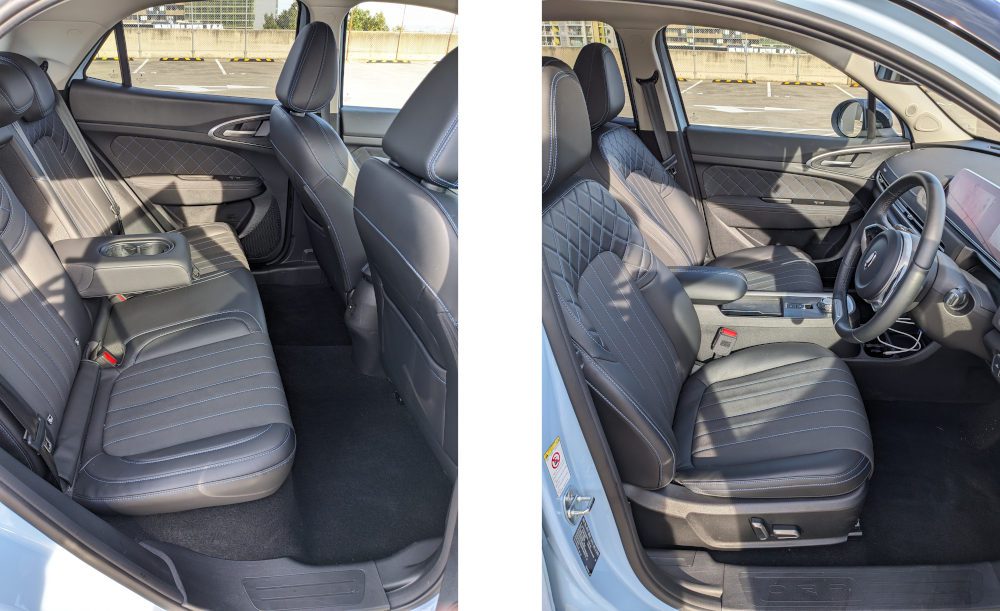
Rear seat amenities include a lone USB-A charging port, map pockets, door bins and a fold down armrest with two cup holders. There are no air vents in the back, but at least the rear windows go all the way down if necessary.
Infotainment in the Ora is handled by dual 10.25 inch screens. The central touchscreen seems basic at first, as the home screen is taken up almost entirely by media source selection and whatever audio is currently playing. Vehicle and climate settings can be accessed using shortcuts on the right-hand side of the screen.
The touchscreen was occasionally unresponsive, requiring multiple presses to make selections or enable settings. Dedicated climate control switches are located below the touchscreen for front and rear demisters, A/C and climate on/off but not temperature or fan speed which have to be adjusted on the screen.
In what seems like an odd choice, given the dedicated climate switches, there is no volume knob or buttons for passengers. To adjust the volume they need to either swipe down on the screen and use the sliders which are fiddly, or ask the driver to use the volume up/down buttons on the steering wheel.
Wireless Apple CarPlay is currently supported in the GWM Ora and Android Auto is supposedly coming soon via an update. This will alleviate one of the downsides of the Ora infotainment system, which is a lack of built-in navigation.
There are some nice touches I discovered in the Ora such as the blinker sound coming from the left or right speakers depending on which way you are turning, a nice unique audio cue. You can also play videos from a USB stick which might come in handy while charging or waiting somewhere.
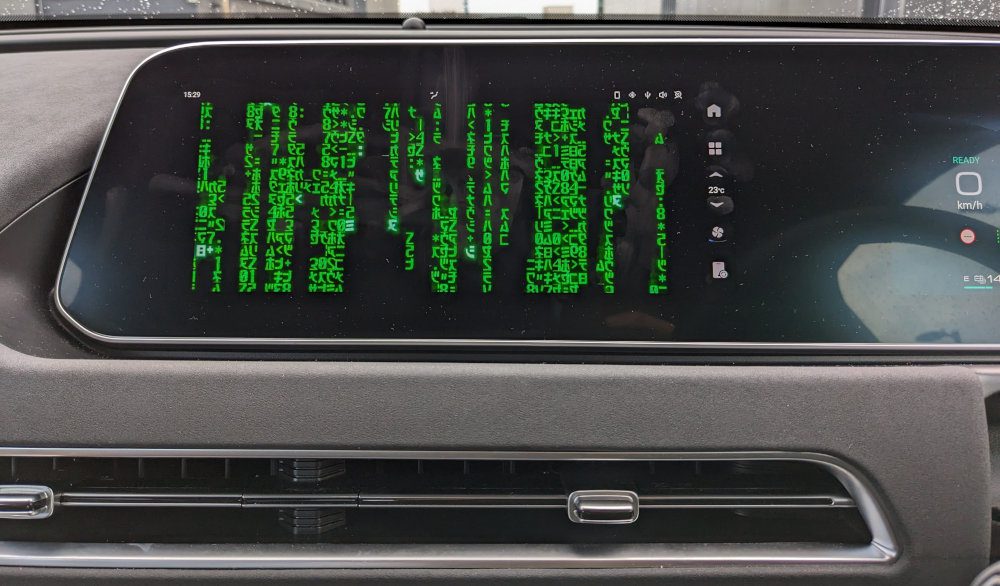
Driving experience
The Ora is easy to jump in and drive as there is no start/stop button, just press the brake and spin the gear selector knob to engage drive or reverse while you watch the animated koi fish swim across the screens. At 4.3 m long with a tight turning circle, the Ora is easy to manoeuvre and park in tight spaces.
Parking cameras are clear and even the base variants feature a top down 360-degree view with transparent chassis mode, making it easy to line up the vehicle or park parallel to the kerb. Distance to objects is shown down to the nearest centimetre too, rather than just the usual yellow, orange or red blocks as you get closer to objects.
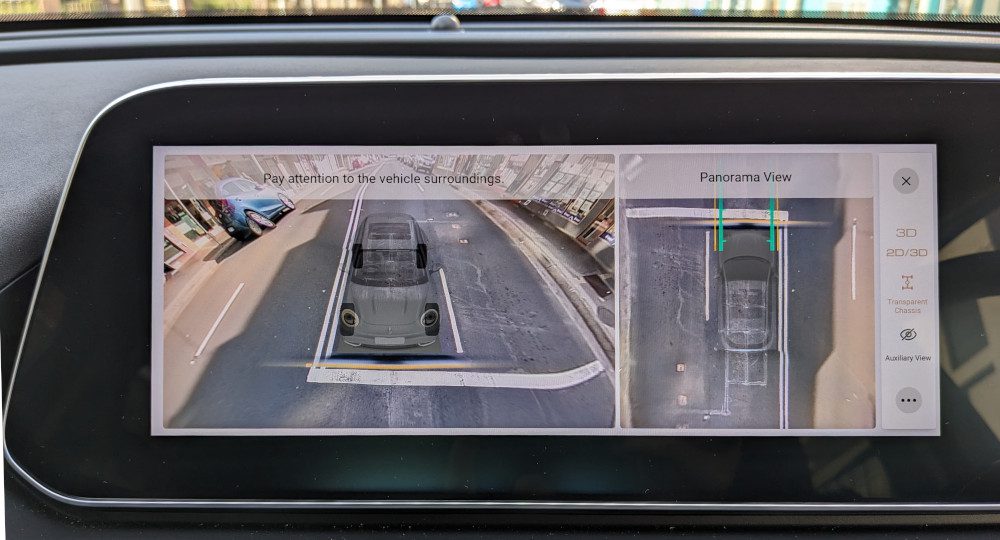
All GWM Ora variants including the GT feature the same 126 kW / 250 Nm front-wheel drive system. The Ora feels quick enough around town and there is enough torque to accidentally spin the front wheels if you’re not careful taking off in wet conditions. Once you get up to highway speeds, it feels underpowered while overtaking and is noisier than other EVs.
Five different driving modes are available but I found them very similar in terms of available power, they just felt less responsive as you move from sport to normal and eco, so I stuck with normal most of the time. Suspension in the Ora is tuned for a soft and comfortable ride which suits this car as it is not trying to be sporty.
Regenerative braking in the Ora needs major improvement. It is weak in the strongest setting and the so-called “Single Pedal mode” is misleading. Even with this mode enabled, the brake pedal is required to fully stop the car and it sometimes starts to roll backwards when coming to a stop uphill.
This Single Pedal mode needs to be enabled every time you start the car too, which requires three touches on the central screen. There is a frequently used vehicle settings screen, but it only contains ESC Off and power assisted steering feel which are not settings that I imagine most people would change frequently at all.
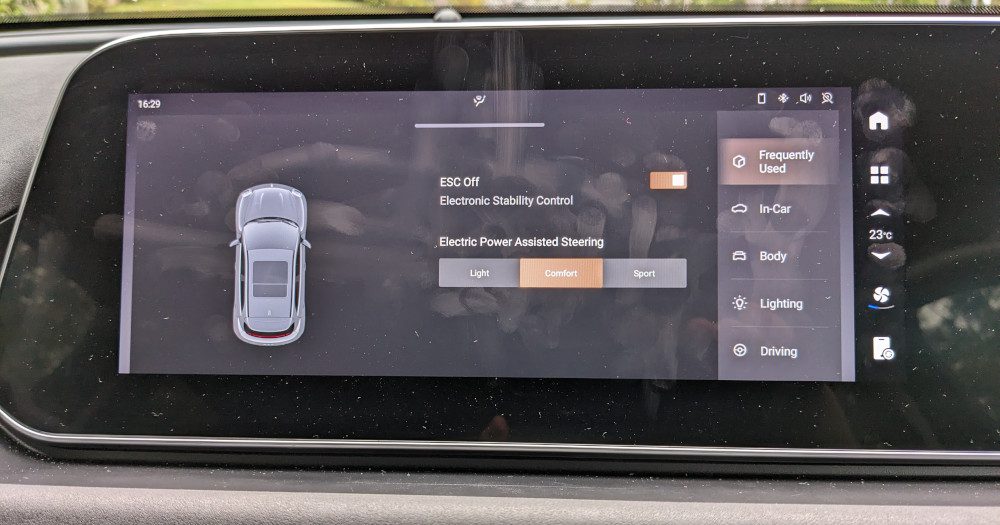
Driver assistance and safety is comprehensive across the Ora range, with a long list of standard features. Front parking sensors and auto parking assist are the only two things the base variants miss out on. Most of these features worked well apart from the forward collision warning which gave me many false positives even on the lowest sensitivity.
Adaptive cruise control and lane centering also needs improvement. I found the lane centering jerks around and probably makes you look like a drunk or tired driver from behind. The whole system temporarily switches off if you accelerate, meaning you need to take full control rather than just being able to nudge it faster while overtaking for example.
Efficiency figures for the Ora were hard to obtain as the figure shown doesn’t seem to clear whenever the trip meter is reset. After the first few days driving around town it was indicating consumption of 15.5 kWh / 100 km. Following a highway test loop the figure rose to 16.1 kWh / 100 km.
Maximum range calculated from these efficiency figures is between 366 – 380 km based on the available battery capacity in the extended range variant. Assuming the same efficiency in the standard range variant with a 45 kWh usable battery, a full charge in that would take you between 282 – 293 km.
Charging and ownership
Maximum AC charging speed in the GWM Ora is typical at 11 kW, while DC fast charging speeds are one of the lowest I have seen on a new electric vehicle for a long time. The maximum charging speed for the extended range battery is 67 kW, while the smaller standard range battery tops out around 64 kW.
This translates into 10-80 % DC charging times of either 41 minutes in the standard range Ora or 50 minutes in the extended range, meaning road trips in an Ora might be painfully slow unless you enjoy taking longer breaks. I guess it gives you plenty of time to watch videos from a USB stick while you wait.
Given there is no built-in navigation in the Ora, you will need to rely on your phone to search for and drive to EV charging stations. With the charge port located on the passenger side just behind the front wheel, kerbside charging stations are easy to access. However, you might need to park the nose close to DC chargers with shorter cables so they reach.
GWM warrants the Ora for 7 years and the battery pack for 8 years, both with unlimited kilometres which is great considering many EVs have a limit of 160,000 km for their batteries. Service intervals are every 12 months or 15,000 km and capped price servicing is available for $99 per service.
Conclusion
Since launching last year the GWM Ora has consistently lagged behind both the MG4 and BYD Dolphin in terms of sales, as well as the MG ZS EV which now starts from $39,990 driveaway. It will be interesting to see if the permanent price reductions from GWM can help it to stay competitive as the number of affordable EVs in Australia grows.
The GWM Ora represents good value for money with a comprehensive list of standard features, a long warranty with unlimited km and affordable service costs. If looks and design are high on your list of considerations then the Ora is worth taking for a test drive.
Weak points for the Ora are less storage space compared to the other sub-$40,000 hatchbacks, poor DC fast charging speed and some issues with driver assistance systems. These limitations make the Ora better suited to use around town rather than long trips, or people looking for a smaller second car instead of a primary vehicle.
Table of key specifications for the GWM Ora:
| Variant | GWM Ora Extended Range | ||
| Starting price | $40,990, driveaway | ||
| Paint colours and options | 5 paint colours:
|
||
| Battery size | 63 kWh gross, 59 kWh usable | ||
| Battery chemistry and manufacturer | Nickel Manganese Cobalt (NMC), CATL | ||
| Range | 420 km WLTP | ||
| Driven wheels | Front-wheel drive | ||
| Power / Torque | 126 kW / 250 Nm | ||
| Charging socket | CCS2 combo | ||
| Maximum charging speed | 67 kW DC, 11 kW AC | ||
| Charging time | 11 kW AC (10 – 80 %) – 6.5 hours 75 kW DC (10 – 80 %) – 50 minutes |
||
| Exterior dimensions | Length: 4,325 mm Width: 1,825 mm Height: 1,603 mm Wheelbase: 2,650 mm Ground clearance: 120 mm |
||
| Kerb weight | 1,580 kg | ||
| Storage space | Frunk: N/A Boot, rear seats up: 228 L Boot rear seats folded: 858 L |
||
| Service interval | 12 months / 15,000 km | ||

Tim has 20 years experience in the IT industry including 14 years as a network engineer and site reliability engineer at Google Australia. He is an EV and renewable energy enthusiast who is most passionate about helping people understand and adopt these technologies.

